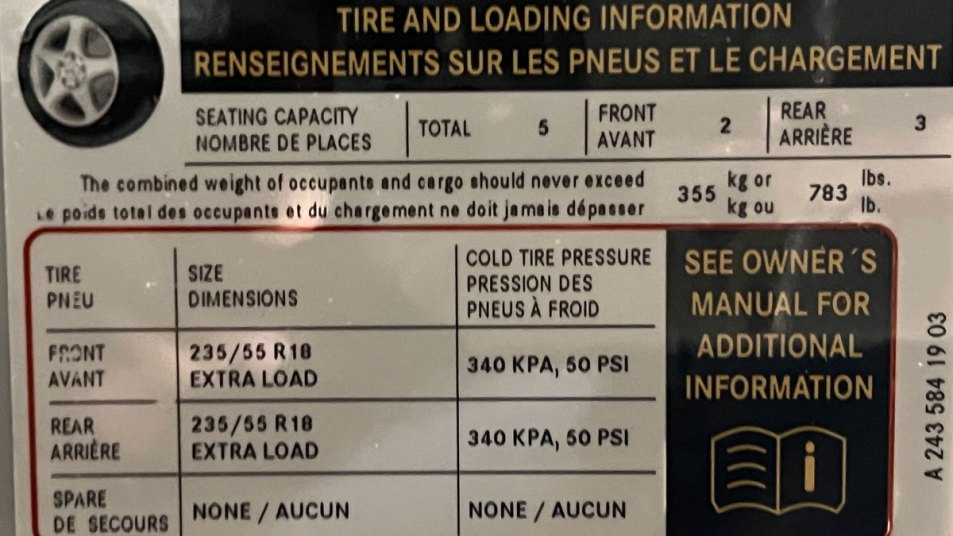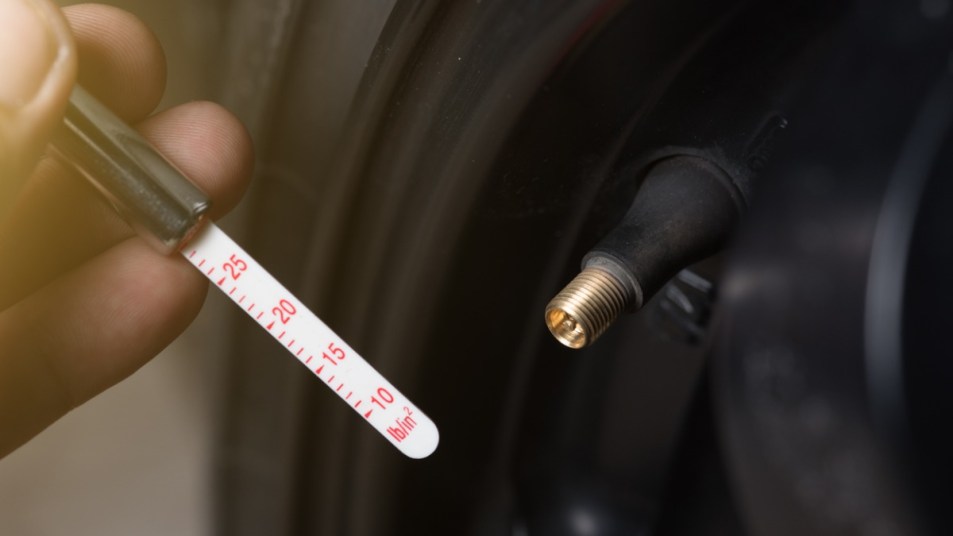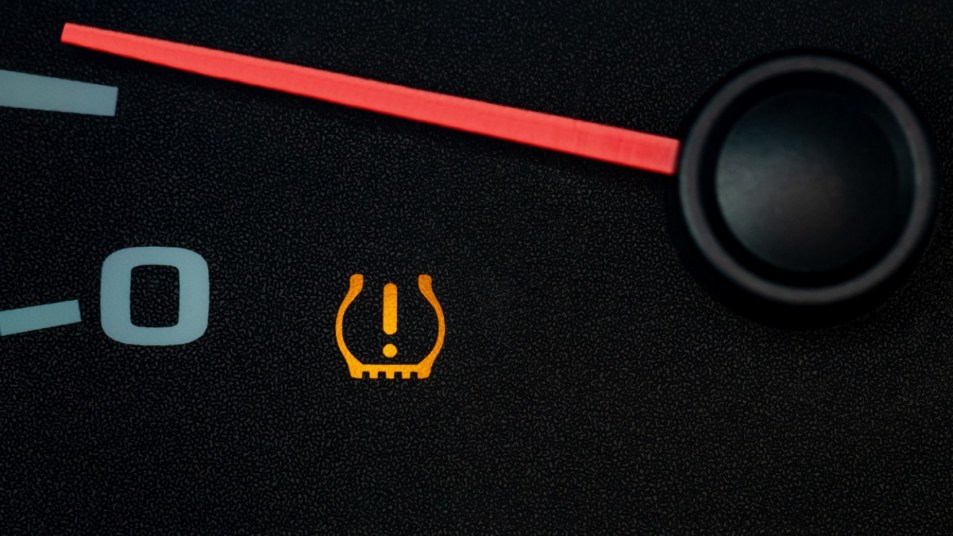Quick Facts About Tire Pressure
- Low tire pressure is a safety issue.
- It also leads to extra wear and tear.
- In an electric vehicle, lower tire pressure reduces its range.
- Check your tire pressure using a gauge at least once a month.
Your car’s tires are constantly under thousands of pounds of weight, leading them to lose air over time. It is essential to know how to check your tires’ air pressure. This is especially true in the winter, as the cold temperatures make them lose pressure faster.
Driving on poorly inflated tires can negatively affect your car’s performance. It could decrease your fuel efficiency or electric car range and cause tires to wear more quickly than they should. So, it is critical to keep all your tires properly inflated.
We’ll tell you where to find your vehicle’s ideal tire pressure, the tools you need, and when to check it so you can stay safe and keep your car in optimal running condition.
How to Know What Your Tire Pressure Should Be
Cars’ tire pressure varies, depending on the vehicle’s make and model. Your car’s recommended pressure is on the tire pressure label located inside the driver’s side door. It is visible once you open your car door. You can also find it in your owner’s manual.
The tire pressure label tells you the ideal air pressure for your tires. Just like underinflation can negatively impact your car’s performance and cause excess wear and tear, so can overinflation. Follow the label, and do not inflate above the recommended psi, or pounds per square inch.
Some vehicles, such as a 2021 Ford F-150, require 35 psi in each tire. However, the tire pressure label on the all-electric 2022 Mercedes-Benz EQB (shown above) suggests 50 psi in each tire.
What You Need to Check Tire Pressure
Of course, your car’s instrument panel may provide you with the tire pressure on each wheel. However, checking tire pressure is easy and only takes a few seconds per tire. You can do it at home or swing by the nearest gas station, tire service retailer, or dealership to check the pressure, and if you want to expedite the process, put air in the tires as well.
Tire Gauge
Use a tire pressure gauge to check the tire pressure of your vehicle. A gauge measures how much air pressure is in your tires. It also helps you determine if you need to inflate or deflate your tires. A basic pencil-style or dial gauge costs less than $7. But if you want a digital pressure gauge, it will cost you at least $10.
Gas stations use built-in tire pressure gauges connected to an air pump. But, these can be inaccurate. For accurate and best results, you should bring your own gauge to assess your tire pressure.
Checking Your Tire Pressure
Here’s how to gauge how much pressure is in each tire on your vehicle. The process takes less than a minute per tire. The best time to check the pressure is when the tire is cold, i.e., when it has been sitting for some time.
- Determine the manufacturer-recommended tire pressure.
- Unscrew the tire’s valve cap and set it aside somewhere you won’t lose it.
- Attach your tire pressure gauge to the tire valve and get the air pressure reading. If using a pencil gauge, a scale plate that looks like a ruler will emerge from the tool once attached to the tire valve; the extent of the protrusion will indicate the psi in the tire. When using a dial or digital gauge, you can check the reading on its face.
- Cross-check the tire’s air pressure to the recommended air pressure.
- If needed, use an air machine at a gas station to add air.
- Use your tire gauge to check the pressure until you reach the recommended psi.
- If you accidentally overinflate the tire, you can also release air by pushing in the valve stem. Do this by pressing the nozzle onto the valve, but not enough to form a tight seal; you should hear air hiss out. Release air and recheck the tire pressure until you reach the recommended psi.
- When done, detach the air pump and finish by screwing on the tire valve cap.
How Often to Check Tire Pressure
Realistically, you only need to check your tire pressure about once a month if your tires seem in good shape. It’s also smart to check tire pressure before a road trip. Typically, it takes time for your car’s tires to lose any significant amount of air. However, you may need to check the pressure more frequently during sudden temperature drops and winter months.
Also, if the tires look flatter than usual, it’s time to check them. Potholes, curb bumping, and nails and other sharp objects can cause tires to lose air quickly and go flat. If the ride starts to feel shaky or is swaying, those are other signs that one or more of your car’s tires are underinflated. In addition, if your vehicle takes longer to brake, that can be a sign that the tires’ air pressure is getting low.
Another indicator is when your tire pressure monitoring system (TPMS) light comes on. Don’t ignore this light — it’s a signal to check the pressure immediately and, in some cases, go to the nearest auto repair center for tire maintenance. Keeping your vehicle’s tires in good shape helps your car retain its value and, more importantly, keeps you safe on the road.













